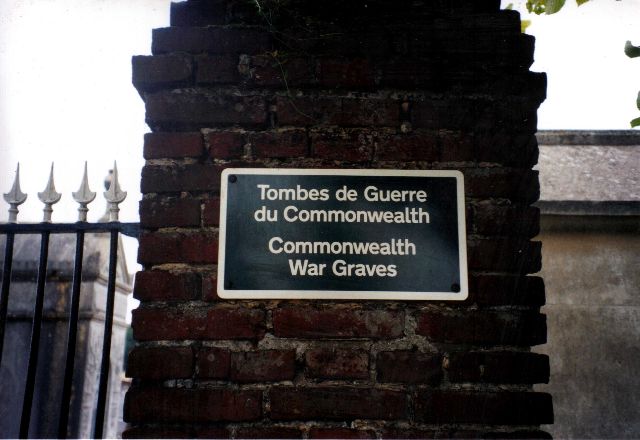The Grave
What follows is a selection of photographs taken in the cemetery, showing how the grave has changed over the years.
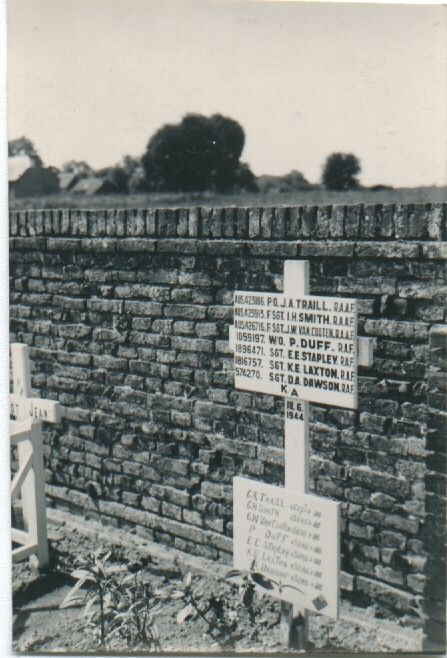
In 1948 there was a single cross carrying two commemorative boards. The upper, official, one gave the crew’s service numbers, names and ranks, the lower one, older and created locally, showed only the names (with three errors of initial and one of surname) and informal ranks (“CAPT.” for the pilot and “SERG.” for the rest of the crew). Both were in the same sequence as in the squadron’s operations record book, this being pilot, navigator, bomb aimer. wireless operator, mid-upper gunner, rear gunner and flight engineer.
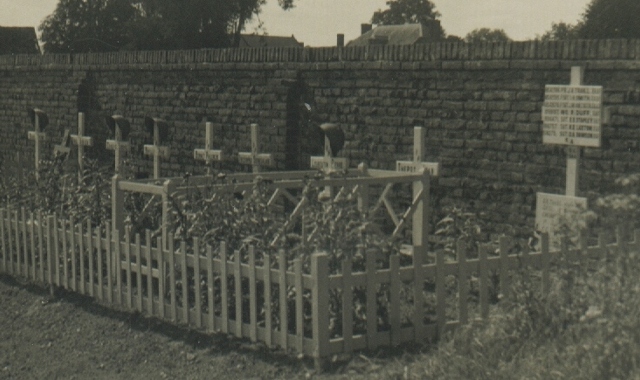
Also in 1948 there were eight identical smaller crosses to the left of the crew’s one, four with helmets resting on top. These were the graves of French soldiers killed in 1940 when fighting the German invasion forces, who would have reached the area of Gannes in late May or early June, as they reached Amiens on 18 May and occupied it on 23 May, occupied Rouen on 12 June and entered Paris on 14 June.
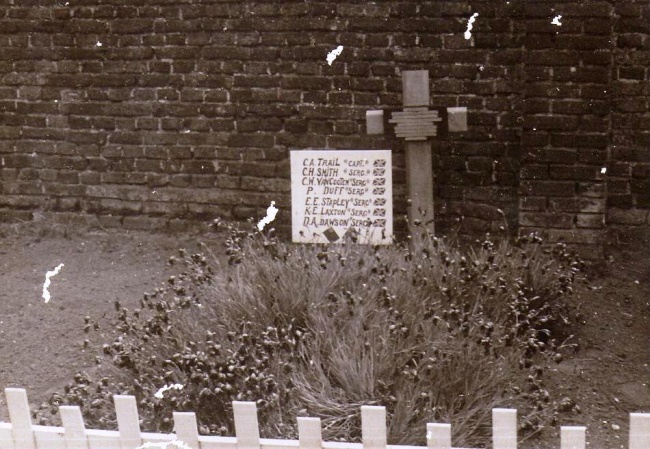
In 1952 both boards had gone, but the lower one present in 1948 had been replaced by a near-replica. The single cross was different from four years before and had nine lines of text, not possible to make out on the original photograph taken by Bill Smith, even with a magnifying glass. His letter gave some information on this:
…at present the names are not to [sic] clear as apart from the war grave cross which has the names in tiny print the other plaque which the mayor put on himself being of wood is not very clear.
From the length of each line it can be deduced that the names on the cross were in the same order as on the board, topped and tailed with something like “IN MEMORY OF” and “REST IN PEACE”. It seems likely that this formed the official marking of the grave until individual headstones were installed some time later.
It can be seen that by this time, at least the rightmost of the other crosses had gone, and presumably all of them. As will be read in the next section, nobody from Gannes in the armed forces had been killed even as late as May 1944, so it can be presumed that the dead soldiers were from other areas and their remains had been taken back there, or to a military cemetery, by 1952.
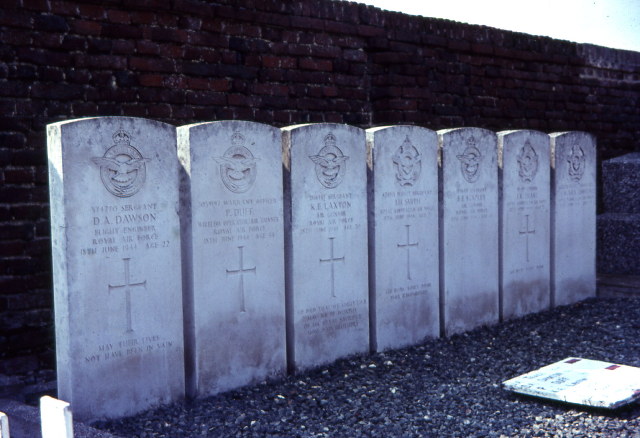
This photograph of 1964 shows the row of seven Commonwealth War Graves Commission stones in surname order from left to right. There was yet another temporary marker board lying in front; this one too listing the pilot first but this time with the others in alphabetical order. Where this came from, and when, is unknown.
The next photograph, taken in 2008, shows the commemorative plaque from the 50th anniversary ceremony, and the glazed panel containing photographs of the crew which was installed in 2007. Some time after 1964, the grave has been kerbed and the original brick wall has been replaced by one of concrete panels.
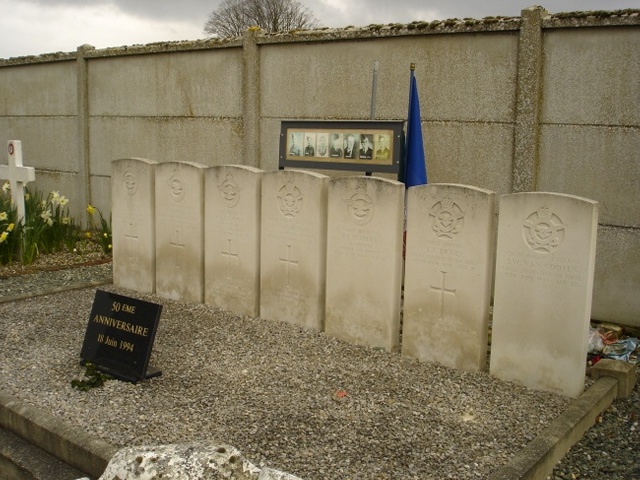
For some unknown reason, the four Britons in the crew have their onboard role (flight engineer, etc) shown on their headstones but the three Australians do not.
The final photograph shows the plaque at the cemetery entrance which makes clear that some of those buried within came from far afield.
